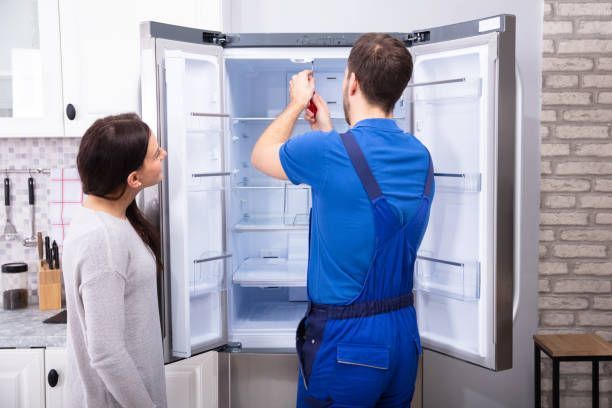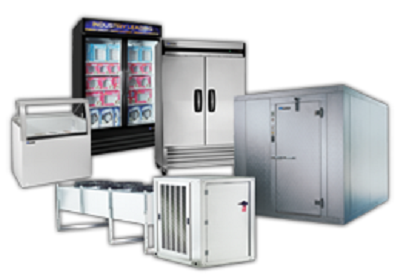The Ultimate Overview to DIY Device Repair Service Techniques
From fridges to dishwashers, understanding how to troubleshoot and repair these devices can conserve you time and money. Are you ready to find crucial strategies that will encourage you to take care of fixings confidently?
Recognizing Usual Device Troubles
When you rely on your home devices, it can be annoying when they suddenly quit functioning or act up. Recognizing common device issues can help you repair problems effectively.
If your oven isn't home heating, defective components or thermostat problems could be responsible. Dish washers usually experience issues with drainage, so see to it the filter is tidy and the drain tube isn't kinked.
Also, listen for unusual noises; they often suggest mechanical concerns. By acknowledging these indicators, you can save time and potentially prevent pricey repairs. A little understanding goes a lengthy way in preserving your appliances, so remain educated to keep whatever running efficiently.
Essential Tools for DIY Repairs
Before diving into do it yourself device repair work, it is essential to gather the right devices to assure the process goes smoothly. Begin with a great collection of screwdrivers, consisting of both flathead and Phillips, as they're important for opening most devices. You'll also want a pair of pliers for grasping and twisting cords or tiny elements.
Do not neglect a multimeter; it aids you examination electrical parts and identify problems properly. A socket collection comes in handy for loosening or tightening bolts, while an utility blade can be useful for opening up or reducing cords product packaging.
Ultimately, consider having a flashlight on hand to illuminate dark spaces inside your devices. With these essential tools, you'll be fully equipped to take on different repair services, conserving both money and time. Collect your gear and get ready to roll up your sleeves!
Safety First: Precautions to Take
Before you start any type of home appliance repair work, it's necessary to prioritize security. Make sure you put on individual protective equipment, disconnect the source of power, and maintain your job location arranged. These basic safety measures can help prevent crashes and ensure a smoother repair work process.

Individual Safety Equipment
Safety and security gear is an essential part of any type of DIY home appliance repair work task. Steel-toed boots are likewise a smart selection, particularly when lifting hefty appliances. Bear in mind, being prepared with the best equipment keeps you safe and concentrated on completing your repair service effectively.
Power Source Interference
To ensure a safe DIY device repair work, disconnecting the source of power is necessary. Before you begin any work, you need to turn or disconnect the appliance off the breaker. This straightforward step stops electric shocks and guarantees that you can concentrate on the repair work without bothering with unintentional activation. Always verify that the device is off by examining it with a voltage tester. If you're taking care of bigger appliances, like a washer or clothes dryer, see to it to secure the power cord and stay clear of any type of contact with water. Keep in mind, security! As soon as you're confident that the power is separated, you can confidently wage your fixings, knowing you've taken the required safety measures to secure on your own.
Job Location Organization
A well-organized job area can make all the difference in your DIY appliance repair work task. Start by clearing your office of clutter to stop disturbances and crashes. A tidy room not just increases effectiveness but likewise maintains you secure while you work on your home appliance fixing.
Step-by-Step Guide for Fridge Repair Works
When your refrigerator starts acting up, it can be irritating, yet taking on the trouble on your own can conserve you time and cash. Inspect for typical problems like temperature level variations or uncommon sounds. For a noisy fridge, check the follower and validate it's not blocked.
If there's water pooling inside, evaluate the door seals for damages or dust, and clean them if necessary. As soon as you've attended to the issue, connect the fridge back in and check it for a few hours.
Fixing Cleaning Device Concerns
Just like fridges, cleaning devices can provide their very own collection of challenges, but lots of concerns can be solved with a little troubleshooting. If your device won't begin, inspect the power cable and validate it's connected in. Next off, inspect the door latch; a malfunctioning lock can protect against the cycle from starting. If you notice unusual noises during operation, it could be as a result of international things embeded the drum or the drainpipe pump.
If your clothes aren't getting tidy, take into consideration the water degree and cleaning agent type; making use of as well much detergent can create excess suds, impacting efficiency. For leakages, take a look at the hose pipes for cracks or loose connections. Tightening up these can often solve the trouble. Normal maintenance, like cleaning the filter, can protect against several problems from occurring. Remember, a little troubleshooting goes a lengthy means in keeping your washing equipment running efficiently.
Troubleshooting Ovens and ovens
Just how can you fix common concerns with your stove or range? Beginning by examining the power supply. Make sure it's connected in and the circuit breaker is not tripped. If it's a gas oven, confirm the gas valve is open. Next, examination the burners: if they do not ignite, clean up the igniter and check for blockages in the heater ports.
If your stove isn't heating, check the temperature level settings and validate the door seals firmly. If it's harmed., a damaged heating aspect can also be the perpetrator; you could need to replace it.
For irregular cooking, rotate your frying pans and take into consideration using an oven thermostat to validate accurate temperatures. Lastly, if you listen to uncommon noises or smell gas, shut off the home appliance immediately and get in touch with an expert. By complying with these actions, you can determine and settle many common oven and range problems efficiently.
Repairing Dishwashing Machines Facilitated
When your dish washer starts acting up, it can be aggravating, however dealing with typical problems isn't as difficult as it seems. You'll learn step-by-step troubleshooting methods that will help you pinpoint the trouble, in addition to the essential tools you'll require to take on repairs on your own. Allow's make repairing your dishwashing machine a breeze!
Common Dish Washer Concerns
While dish washers are developed to make your life less complicated, they can often encounter common issues that leave you really feeling irritated. One regular problem is poor cleansing efficiency; this commonly occurs page due to clogged up spray arms or unclean filters. You may also see water merging near the bottom, which can indicate a damaged drain or a kinked hose. It can be a straightforward problem with the lock system or door seal if your dishwasher's door will not latch. In addition, unusual sounds can indicate damaged elements or loosened parts. If you scent something odd, it stove maintenance may be time to examine for food debris or a malfunctioning electric motor. Resolving these concerns early can save you time and trouble down the roadway (Subzero Repair Service Dependable Refrigeration & Appliance Repair Service).

Step-by-Step Troubleshooting
Prior to diving right into repair work, it's vital to determine the details issue your dish washer is encountering. If it's not cleansing properly, Begin by examining. Check the spray arms for clogs and warranty they spin easily. Analyze door seals and tubes for any damage if it's dripping. For weird sounds, listen closely during cycles; foreign items could be stuck in the filter or impeller. If your dishwashing machine will not begin, examine the power supply and door latch. Don't neglect to consult your customer guidebook for troubleshooting tips particular to your design. By systematically resolving each possible problem, you can determine the trouble and take the essential actions to repair it, making your dish washer feature like brand-new once more.
Vital Repair Work Tools
Having the right devices at your disposal can make all the difference when fixing your dishwashing machine. Don't fail to remember a bucket or towels for any kind of water spills throughout fixings.
If you're taking on clogs, a drainpipe snake or a wet/dry vacuum cleaner will be very useful. You may additionally want a degree to assure your dishwashing machine's properly lined up. Finally, security equipment like gloves and safety glasses will certainly secure you while you work. With these important devices, you'll be well-appointed to take on any dishwashing machine repair challenge that comes your means.
Frequently Asked Questions
Exactly how Do I Figure out if an Appliance Is Worth Repairing?
To establish if an appliance's worth repairing, consider its age, fixing costs, and present worth. If fixings go beyond half the substitute price, you could wish to purchase a new version instead.
Can I Locate Substitute Parts In Your Area for My Device?
Yes, you can frequently locate substitute parts in your area for your home appliance. Check equipment shops, appliance repair stores, or regional classifieds. Don't neglect to bring the design number to guarantee you obtain the right part!
What Usual Mistakes Should I Stay Clear Of When Fixing Appliances?
When repairing devices, prevent hurrying with diagnostics, ignoring safety and security preventative measures, or using wrong tools. Do not avoid reviewing handbooks or seeing tutorials; they provide important advice. Be client and thorough to ensure successful repair services and prevent additional damages.
For how long Does a Typical DIY Device Repair Work Take?
A normal DIY home appliance fixing normally takes one to 3 hours, depending upon the complexity. You'll desire to collect your tools and products first, and comply with guidelines thoroughly to stay clear of unneeded delays.
Are There Any Type Of Service Warranties for DIY Appliance Fixes?
When you take on DIY appliance repair services, service warranties commonly don't cover your work. Nonetheless, some manufacturers may recognize service warranties for components you replace. Always inspect your device's service warranty terms before starting any repair work to prevent issues.
Before diving right into Do it yourself home appliance fixings, it's important to gather the right tools to guarantee the procedure goes efficiently.Prior to you begin any type of home appliance repair service, it's crucial to focus on safety and security.To assure a secure Do it yourself device fixing, separating the power resource is crucial.An efficient job area can make all the difference in your DIY appliance fixing task. Constantly check your device's guarantee terms before beginning any kind of fixings to range repair near me stay clear of concerns.